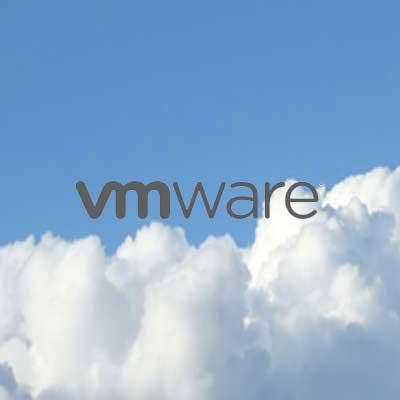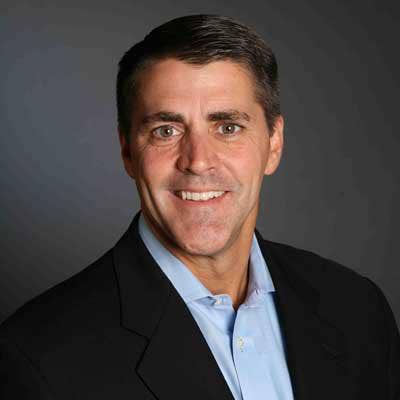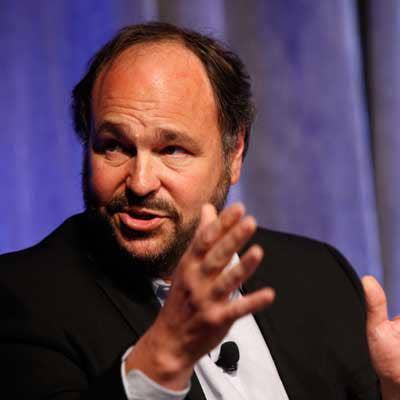10 Examples Of VMware's Lofty Cloud Ambitions

VMware Steps Up Its Cloud Infrastructure Game
VMware holds a commanding lead in the enterprise virtualization space, and it's now trying to parlay this into a dominant position in cloud computing. With its mid-July cloud infrastructure stack updates, VMware provides tangible evidence of how it intends to achieve this goal. VMware has significantly expanded the performance and scalability of vSphere's virtual machines -- introducing the concept of "monster VMs" -- and it's also proclaiming dramatic improvements to virtualization storage and management. With these technology advances, VMware is looking to blast away the remaining barriers to virtualizing tier one business applications and get partners and customers on a fast track to the cloud. The stage is now set from a technology standpoint -- now it’s up to the VMware marketing team to show customers and partners that the sooner they move to the cloud, the better. Following are 10 quotes from VMware executives that show how the Palo Alto, Calif.-based company intends to become just as synonymous with cloud computing as it is with virtualization.

Carl Eschenbach, President Of Customer Operations At VMware
"Selling licenses based on virtual RAM is a different mindset for solution providers, but it's not going to change the way they do business with us. I actually think it's going to be received quite well because it's a better way to measure than actually being tied to a physical device."
In vSphere 4 and vSphere 4.1, VMware uses a per-CPU licensing model based on the number of server cores. But in vSphere 5, VMware pegs licensing cost to the amount of physical memory that customers allocate to virtual machines on the host. Customers can pool the allotment, called vRAM, across their entire data center, and VMware isn't imposing any size limits on the pooling. VMware says the new licensing model is a reflection of the utility-based, cloud model. That may be true, but for many customers, it's going to mean paying a lot more for the server infrastructure they already have in place. Still, VMware customers and partners reaped impressive benefits from using VMware products and the company is simply adjusting its licensing to reflect this value.

Bogomil Balkansky, Vice President Of Product Marketing At VMware
"We are referring to this launch as a cloud infrastructure launch, not a vSphere launch. We do believe that our customer need the combination of this entire family of products, and that they constitute the new stack for building a cloud infrastructure."
VMware is stepping up efforts to position vSphere, vShield, vCloud Director and vCenter Operations as an integrated cloud stack that partners should view -- and sell -- as a closely knit family of products. Sure, vSphere 5 is the star of the show, but VMware is also noting that this is largest simultaneous product update in its history.

Tim Stephan, Senior Director Of Product Marketing At VMware
"We don’t anticipate a lot of people creating virtual machines of this size, but we do have larger customers that are pushing the boundaries of where the VM is itself today and want to have larger VMs. We want to give confidence to customers that are running very large implementations of SQL, Oracle and SAP."
VMware has coined the phrase "Monster VMs" to describe the scale and performance boost that's part of vSphere 5, and for good reason: vSphere 5's virtual machines support up to 32 virtual CPUs, compared to 8 virtual CPUs in vSphere 4. vSphere 5's virtual machines can also hold up to one terabyte of virtual RAM, compared to 256 gigabytes for their predecessor.
The near term goal is to remove any doubts companies might have about putting databases, CRM and ERP systems in a virtual environment. Longer term, these monster VMs are all about paving a road to the cloud that will be free of any technology related obstructions.

Scott Aronson, Senior Vice President Of Global Channels And Alliances At VMware
"There is a little bit of fear and trepidation from partners who wonder what will happen to their customers if they sell a service provider's public cloud service. I think we have a responsibility as an industry is to make it easy for that matchmaking to occur in a safe way that protects both parties' interests."
VMware's view is that hybrid cloud delivery will be the way most enterprise customers adopt cloud computing. But this has worrisome implications for channel partners, who share no traditional industry kinship with service providers -- and in many cases, are scared as heck of being steamrolled by these behemoths. Many VMware partners are building private clouds and are comfortable doing so, but they're not keen on the idea of partnering with service providers on the public cloud piece of the puzzle. VMware is aware of these channel fears, and executives told CRN there's still some work to be done in hammering out how these potentially thorny relationships will work.

Gaetan Castelein, Director Of Product Marketing At VMware
"Traditionally, the most difficult thing in setting up Site Recovery Manager is the storage replication piece, which required the vSphere guy to interface with the storage guy. In Site Recovery Manager 5, storage replication is handled through VCenter Server on a per VM basis."
VMware, in its Site Recovery Manager 5 release, added vSphere Replication, a hypervisor-based replication feature that promises to yield performance and cost advantages. The cost savings will stem from customers being able to use low-end storage arrays on the failover side. More important, VCenter Server integration will enable the product to function in a more automated, cloud-like fashion.

Dean Coza, Director Of Security Product Management At VMware
"One of the nice things about having a programmable infrastructure is that partners can immediately take advantage of it and start extending it."
VMware has adopted a new distributed architecture in vShield 5 that uses a security VM running on every host, with each host handling between 50 and 100 VMs. Not all customers have that high of a ratio, VMware is touting the performance gains made possible by this distributed approach.
In vShield 5, VMware is adding a network layer 2 firewall will let security vendors integrate their intrusion prevention system (IPS) products. VMware expects to eventually work with McAfee, Symantec, Trend Micro, HP TippingPoint, Cisco and Sourcefire on the network security side of VShield.

Mike Adams, Group Manager In VMware's vSphere Product Marketing Team
"Patching and updating virtual machines in vSphere 4 used to be about going to each individual host. Now with Auto-Deploy in vSphere 5, you can go with a completely automated setup, for one box or many. This changes the operational model of having to patch individual machines."
VMware has built several new automation features into vSphere 5 that give customers the ability to set policies for specific workloads -- such as storage, performance, security, backup, and disaster recovery -- and have the underlying infrastructure provision all necessary services and manage the SLA. VMware calls this Intelligent Policy Management, and it's another example of the company moving to a more cloud-like mindset.

Edward Hsu, Group Manager Of Product Marketing At VMware
"With vSphere Storage Appliance (VSA) installed, SMBs will be able to use VMotion, data recovery, and all the features they need for business continuity and improved utilization that previously weren't accessible to them because they didn't have shared storage."
VMware wants all of its partners and customers to start taking steps toward the cloud, even SMBs. But many SMBs have missed the virtualization boat because they haven't been able to afford shared storage hardware.
Aware of this, VMware is launching vSphere Storage Appliance, which obviates the need for shared storage while giving smaller customers a taste of what virtualization can bring. The hope is that this taste will whet their appetite and lead to greater adoption of virtualization, which VMware sees as a stepping stone to the cloud.

Nicolas Jacques, Product Marketing Manager For Private Cloud At VMware
"In theory, you can create a virtual machine in a manner of minutes, but in practice, it can take weeks, sometimes months, for a user to get access to a virtual machine. VMware's approach is to model what humans would do and use that to increase automation in the infrastructure stack."
vCloud Director is somewhat complex and difficult to grasp for companies that are new to the cloud. But it's a critical driver of VMware's vision for the fully virtual data center. In vCloud Director 1.5, VMware had added SQL support as well as Linked Clones, which enable administrators to create and deploy virtual machines much faster than they've been able to do in the past. It's another example of the type of automation VMware sees as crucial to realizing its cloud aspirations.

Paul Maritz, VMware CEO
"When we talk about automation, rather than trying to layer management software on top, we're baking it into the platform itself. The vast majority of code for vSphere goes toward these automations, that was true of vSphere 4 and it's even more true with vSphere 5."
VMware started off as a narrow hypervisor company that allowed customers to run multiple copies of an operating system on a single physical machine. But as VMware moves to the cloud, it's talking more about how to take collection of machines and get them behaving as a sort of single giant machine, to improve efficiency, reliability and availability. In the latest cloud stack update, VMware believes it has woven in sufficient automation to make this long-held notion a more concrete reality.